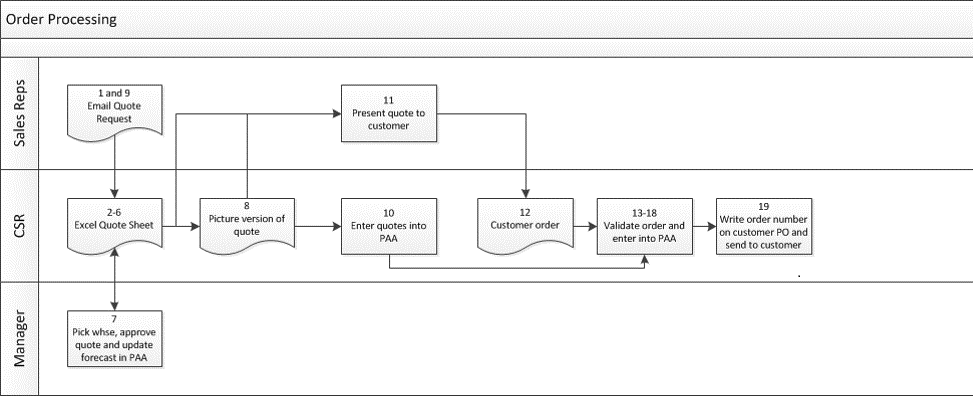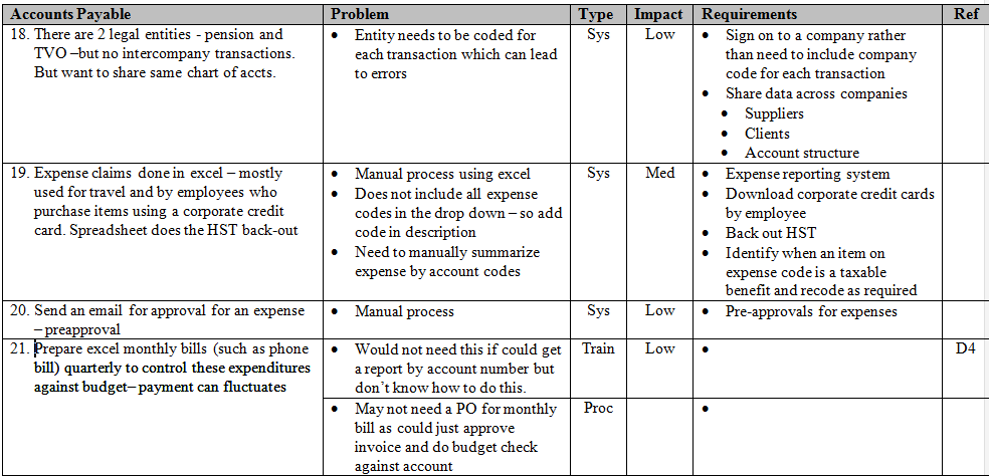Definition of Business Process
Business Process is defined a collection of interrelated work tasks, initiated in response to an event that achieves a specific result for the customer of the process. A business process often spans departments – it could start with an event that occurs in sales and ends with shipment of goods. The customer may be an internal person. For example, when an employee requests supplies, the employee will be the customer.
Objective
The objective of the BPR will dictate the level of detail and information collected. For the purposes of this article, we have assumed that business process is deemed to have many problems and it is being reviewed to improve the existing processes. Improving a business process is not always about replacing the system. The problems may also be related to the process itself, training, infrastructure or motivation.
Interviews
The people in the trenches doing the day-to-day work should be interviewed to describe their process in a day-in-the-life fashion. These people are often describes as subject matter experts (SMEs). It’s not good enough that they just describe it. They also need to show you how they do it. You need to encourage the SMEs to also describe any problems with the existing process and to indicate which problems are serious in their opinion.
Business Process Report
The report should consist of a high-level process map using the swimlane approach with each symbol tied back to a detailed discussion which consists of the step in the process, problems related to the step, the type of problem, the impact of the problem and the system requirements (if replacement or enhancement of the system is under consideration). The requirements are based on maintaining the existing processes that are needed as well as requirements to overcome the problems. There should also be a reference to any documents or screens that were used to describe the process. When we perform the BPR, we use one monitor to record the discussion and another to view the screens and documents described. As needed, we ask the SMEs to pause and we take a snapshot of the screen using a great tool called SnagIt. When we are complete, we get the SMEs to update their section of the BPR with their feedback.
Sample Process Map /Swimlane
Sample Business Process Report
Business Process Improvement
If there are many problems with the system, then the requirements from the BPR are merged with best practice requirements for the industry and are submitted for review and prioritization. These requirements are wrapped in an RFP and issued to the existing vendor and potentially to other vendors to evaluate their ability to meet the requirements. This leads to a series of demonstrations, contract negotiation and an upgrade or a replacement of the existing system. Our approach is not to create the To-Be business process when the system is going to be replaced or significantly enhanced. Why not leverage the business processes already implemented by the vendor which they claim are best practice? However if the system is not the culprit, then brainstorming is required to address the problems and create the To-Be business process. As well, there may be processes that are unique and the vendor is not able to apply their best practice in which case there needs to be a design of the To-Be business process by the SMEs and the vendors.

